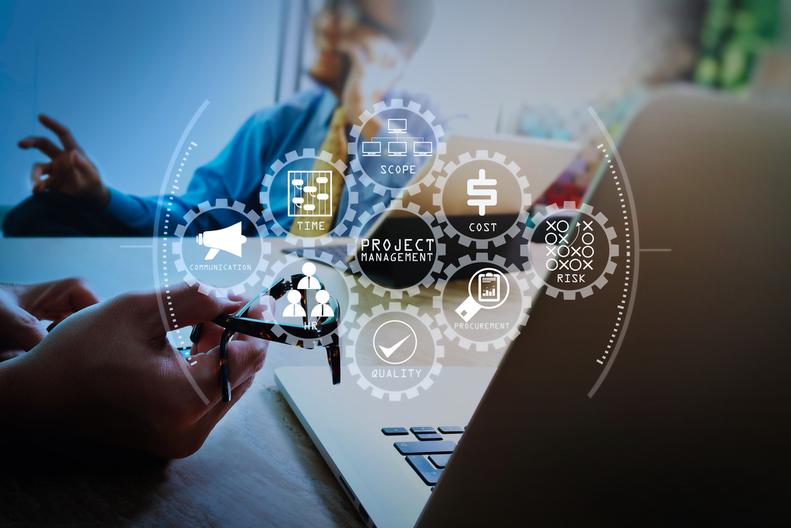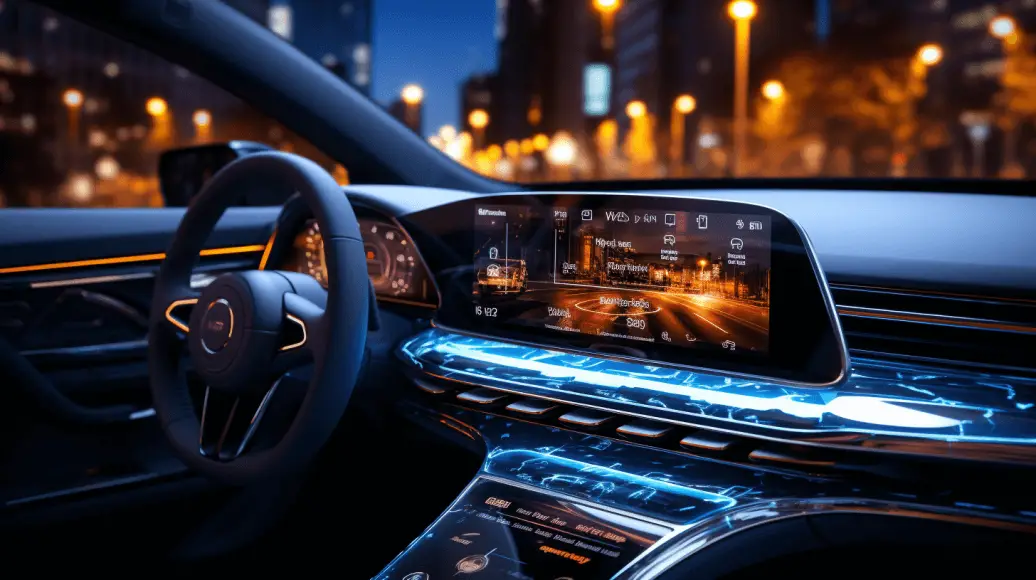El Uconnect Projection Manager es un sistema que permite a los usuarios conectar sus smartphones a la pantalla del tablero de su vehículo.
Es importante tener un sitio web y navegador ser humano actualizado para una mejor experiencia con el Uconnect Projection Manager, asegurando una visualización óptima y segura del sitio web.
The step-by-step instructions presented in this article include the following: – Connecting to the vehicle. – Downloading the Uconnect app. – Establishing a connection between the phone and the in-dash screen. – Setting up Android Auto or Apple CarPlay. – Creating an account with navegador Uconnect.
By following these instructions, users can easily utilize the Uconnect Projection Manager and enhance their driving experience.
What is Uconnect Projection Manager?
Uconnect Projection Manager is a software tool designed to enhance the connectivity and functionality of vehicles equipped with Uconnect technology.
It allows users to seamlessly integrate their mobile devices, such as smartphones and tablets, with their vehicle’s infotainment system. Un sitio web seguro y un navegador fácil de usar es crucial para acceder a los servicios de Uconnect, garantizando una experiencia de usuario óptima.
The benefits of using Uconnect Projection Manager include improved convenience, access to a wide range of apps and services, and enhanced safety features.

Benefits of Using Uconnect Projection Manager
The utilization of the Uconnect Projection Manager offers several advantages. This feature allows users to connect their smartphone devices to their vehicle’s infotainment system, enabling screen mirroring and displaying various apps.
The Uconnect Projection Manager also provides access to various features, including vehicle health reports, remote vehicle start disclosure, compatible devices, location services, vehicle finder, and maintenance costs.
By connecting their smartphone to the vehicle’s infotainment system, users can easily access and control various functions and features, enhancing convenience and safety while driving.
Additionally, the Uconnect Projection Manager allows for seamless integration between the user’s smartphone and the vehicle, providing a more personalized and connected driving experience.
AdvantagesScreen mirroringApps on screenVehicle health reportMaintenance costs
Step 1: Connect to the Vehicle
To connect to the vehicle, several methods can be used.
The first method is connecting via a USB cord, which allows for a direct and reliable connection between the vehicle and the user’s device.
Alternatively, users can connect through their smartphone device, which offers convenience and flexibility.
Lastly, to ensure privacy and security, users can establish a secure connection with private messages, allowing for encrypted communication between the vehicle and the user’s device.
These different options provide users with multiple ways to connect to their vehicle’s Uconnect system based on their preferences and needs.
Connect via USB Cord
Connectivity via a USB cord allows users to establish a wired connection between their input device and the Uconnect projection manager.
Connected via a USB cord, electronic devices can transfer data and communicate with other devices seamlessly.
This method of connection is commonly used for various purposes, including charging devices and transferring files.
When connecting electronic devices to vehicles, a USB connection is often used to establish a link between the two. One example of this is the Uconnect system, which allows users to connect their smartphones to their vehicles and access various features and settings.
To establish this connection, users can simply connect their smartphone device to the vehicle using a USB cable.
Once connected, users can access their smartphone’s features and settings through the vehicle’s screen, allowing for easier and safer use while driving.
However, it is important to note that issues can arise during this process, such as software issues or compatibility problems. Consulting a dealer or troubleshooting the issue can help resolve any connectivity or software issues.
This connection enables users to dodge projection manager their phone screen onto the Uconnect screen, giving them access to various features and applications.
To connect via USB, users must ensure they have the appropriate USB cables for their devices.
Once connected, they can navigate through the Uconnect interface and access features such as Android Auto, which works and allows them to use their favorite phone apps, make phone calls, send messages, and play music or videos.
The USB cord provides a stable and reliable connection, ensuring that users can seamlessly interact with the Uconnect projection manager and enjoy the full range of its functionalities.
Connect through a Smartphone Device
Connecting through a smartphone device allows users to establish a wireless connection between their mobile device and the Uconnect system, facilitating the seamless transfer of data and access to various features and applications.
The Uconnect projection manager enables users to mirror their smartphone screen onto the vehicle’s display, providing a convenient way to interact with their device while keeping their hands on the wheel.
Here are some key features and benefits of connecting through a smartphone device:
– Screen mirroring: Users can mirror their smartphone screen onto the vehicle’s display, allowing them to access and control their smartphone’s applications and features directly from the Uconnect system.
– Jeep integration: The Uconnect system is specifically designed for Jeep vehicles, ensuring optimal compatibility and performance.
– Messaging: Users can send and receive messages through the Uconnect system, making it easier to stay connected while on the road.
– Dealer settings: Users can access and customize various settings related to their vehicle through the Uconnect system, ensuring a personalized and tailored experience.
– Private messages: The Uconnect system also supports private messaging, allowing users to send and receive messages securely and privately.
Connecting through a smartphone device offers a convenient and efficient way to access various features and functions of the Uconnect system, enhancing the overall driving experience.
Users can search for vehicles, send and receive messages, and customize settings seamlessly through their smartphone devices.
Establish a Secure Connection with Private Messages
Establishing a secure connection with private messages allows users to communicate securely and privately through the Uconnect system. The Uconnect Projection Manager provides a platform for users to connect their smartphones to the Uconnect system and access various features such as messaging.
Private messages allow users to send and receive texts without compromising their privacy and security.
To establish a secure connection, users must ensure that both their smartphone and the Uconnect system are paired and connected via Bluetooth or another compatible method.
Once the browser connection is established, users can navigate to the messaging section within the Uconnect system and begin sending and receiving private messages.
It is important to choose contextually relevant keywords when writing an article section, and it is recommended to choose at least 10 keywords for every article.
One option is to connect via a USB cord, which allows for a direct and stable connection.
Another option is to connect through a smartphone device, which provides convenience and flexibility.
Lastly, it is important to establish a secure connection with private messages to protect sensitive information and maintain confidentiality.
These different methods offer various advantages and considerations for connecting to the vehicle.
One popular method for establishing a connection between electronic devices and vehicles is through the use of a smartphone device. This method allows users to access various features and functionalities of their vehicles directly from their smartphones.
For instance, users can send and receive private messages, watch videos, and access customer care services through dedicated smartphone apps.
To establish the connection, users typically need to enable screen mirroring and location services on their smartphones.
Additionally, the smartphone and the vehicle need to be compatible, requiring users to check for compatibility before attempting to connect the two devices.
The connection can be established using a charging cable or through the Bluetooth menu on both the smartphone and the vehicle.
Overall, connecting through a smartphone device offers convenience and accessibility for users to interact with their vehicles.
Establish a Secure Connection with Private Messages
Establishing a secure connection with private messages is crucial for ensuring the privacy and confidentiality of the communication between electronic devices and vehicles.
This is particularly important in the context of modern vehicles, which are increasingly equipped with advanced technologies and connectivity features.
To enhance the security of these connections, several key features and functionalities are necessary:
– Manager on screen: A dedicated interface on the vehicle’s dash screen allows the user to manage and control various aspects of the connected devices.
– Manager with screen mirroring: This functionality enables the user to mirror the display of their mobile device onto the vehicle’s screen, providing a seamless and integrated user experience.
– Vehicle health report: Users can receive detailed reports on the health and status of their vehicle, helping them to identify and address any potential issues promptly.
Step 2: Download the Uconnect App onto Your Smartphone Device
This discussion will focus on the process of installing the Uconnect App on a smartphone’s home screen and selecting which apps to display on the phone’s home screen.
It will explore the significance of these steps in terms of convenience and accessibility for users.
Additionally, the discussion will analyze the implications of these decisions on the overall user experience and functionality of the smartphone device.

How Long To Become A Project Manager
Install the App on Your Home Screen
To ensure easy access to the app, project managers may consider adding it to the home screen of their devices. This allows for quick and convenient access, eliminating the need to navigate through menus or search for the app in a list.
Adding the app to the home screen also ensures that it is easily visible and accessible, serving as a reminder for the project manager to use it regularly.
Additionally, having the app on the home screen can serve as a visual cue for other team members, reminding those working with them to use the app as well.
Overall, adding the app to the home screen of a compatible device or compatible media device is a simple yet effective way to ensure that the app is easily accessible and frequently used.
Choose Which Apps to Have on Your Phone’s Home Screen
In the previous subtopic, we discussed the process of installing an app on the home screen of a phone.
Now, let’s focus on the next step, which is choosing which apps to have on the phone’s home screen. This decision is crucial as it determines the accessibility and convenience of frequently used apps.
Step 3: Connect Your Phone to the Vehicle’s In-Dash Screen
This will focus on the third step of connecting your phone to the vehicle’s in-dash screen or radio.
To begin, you need to select ‘Uconnect’ from the vehicle’s dash screen.
Once selected, you should follow the directions provided on the dash screen to complete the connection process.
Select “Uconnect” from the Vehicle’s Dash Screen Using the Navigator
Selecting ‘Uconnect’ from the vehicle’s dash screen allows for the initiation of various features and functionalities.
This technology, developed by Jeep for their vehicles, provides seamless integration between the vehicle and the driver’s smartphone.
With Uconnect, users can access a range of features such as screen mirroring, maintenance reminders, and Apple CarPlay compatibility.
– Screen mirroring: Uconnect enables users to mirror their smartphone’s screen onto the vehicle’s dash screen. This allows for easy access to apps, navigation, and media while driving, without the need to handle the phone directly.
– Maintenance reminders: Uconnect provides timely reminders for scheduled maintenance, ensuring the vehicle is kept in optimum condition.
– Apple CarPlay compatibility: With Uconnect, drivers can connect their Apple devices and access their favorite apps, music, and messages through the vehicle’s dash screen.
This concept of screen view mirroring, combined with other functionalities, enhances the driving experience and integrates technology seamlessly into the Grand Cherokee.
Follow Directions Once You Select “Uconnect” on the Dash Screen
Upon selecting ‘Uconnect’ on the dash screen, the user is presented with a set of directions to follow to navigate through the various features and functionalities of the system.
These directions are designed to ensure that users can effectively engage with the Uconnect system and access the desired functions.
The user is required to follow the step-by-step instructions provided on the dash screen to maximize their experience with the Jeep Grand Cherokee’s Uconnect system.
This attention to detail is crucial for project managers, as it highlights the importance of following directions to achieve desired outcomes.
In the context of risk management, project managers must similarly adhere to guidelines and protocols to mitigate potential risks and ensure project success
Actively engaging in risk management practices, project managers can effectively identify, assess, and address potential risks, thereby enhancing project outcomes
Step 4: Set Up Android Auto or Apple CarPlay On Your Vehicle’s In-Dash Screen
We will explore the process of activating Android Auto or Apple CarPlay on the in-dash screen of a vehicle. This step is crucial to fully utilize the features and functionalities offered by these platforms.
We will discuss the necessary steps and considerations involved in setting up Android Auto or Apple CarPlay on the in-dash screen, ensuring a smooth and seamless integration with the vehicle’s infotainment system.
Activate Android Auto or Apple CarPlay On The In-Dash Screen
To enable Android Auto or Apple CarPlay on the in-dash screen, users need to activate the appropriate settings within the vehicle’s multimedia system.
This activation process allows users to seamlessly connect their Android device or internet-enabled portable device to the vehicle’s infotainment system, providing access to a range of features and applications.
To activate Android Auto or Apple CarPlay on the in-dash screen, users can follow these steps:
– Navigate to the settings menu on the vehicle’s multimedia system. – Locate the connectivity or smartphone integration options. – Select the option for Android Auto or Apple CarPlay and follow the prompts to complete the activation process.
Once activated, users can enjoy the benefits of these platforms, such as hands-free calling, messaging, navigation, and access to music and other entertainment apps.
It’s important to note that not all vehicles or multimedia systems support Android Auto or Apple CarPlay, so users should check their vehicle’s compatibility before attempting to activate these features.
Step 5: Create an Account With Uconnect on the Website and Link It to Your Vehicle’s System
Following the completion of step 4, project managers should proceed to step 5, which involves creating an account with Uconnect and linking it to their vehicle’s system.
This step is crucial to fully utilize the features and capabilities of the Uconnect system. By creating an account, project managers can access a wide range of services and functions, such as remote vehicle start, vehicle health reports, and navigation assistance.
Linking the account to the vehicle’s system allows for seamless integration and synchronization between the two, ensuring a smooth and efficient user experience.
Additionally, engaging in this step enables project managers to take advantage of Uconnect’s advanced risk management features, providing them with real-time alerts and notifications regarding potential hazards or issues with their vehicles.
This proactive approach to ensures that project managers can address any problems promptly and effectively.
Frequently Asked Questions
How Does Uconnect Projection Manager Benefit Project Managers?
The benefits of using Uconnect projection manager for project managers include improved communication, collaboration, and efficiency.
It provides a centralized platform for managing project tasks, resources, and timelines, facilitating effective decision-making and risk management throughout the project lifecycle.
Can Uconnect Projection Manager Be Used for Risk Management in Any Industry?
Risk management should be engaged by project managers throughout the project lifecycle to identify, assess, and mitigate potential risks.
early identification of risks allows for proactive measures to be taken, minimizing the impact on project objectives and ensuring successful project completion.
Are There Any Limitations or Compatibility Issues With Uconnect Projection Manager?
The question of when project managers should engage in risk management is a complex one that requires careful consideration.
Various factors need to be taken into account, including the nature of work on the project and the level of risk involved
Does Uconnect Projection Manager Offer Any Additional Features or Tools for Project Managers?
Project managers should engage in risk management throughout the entire project lifecycle to identify, assess, and mitigate potential risks.
By doing so, they can ensure project success, minimize negative impacts, and enhance decision-making processes
How Does Uconnect Projection Manager Integrate With Other Project Management Software or Tools?
The integration of Uconnect Projection Manager with other project management software or tools is an important consideration
It enables seamless communication, collaboration, and data sharing, resulting in increased efficiency and effectiveness in project management processes

Project management of cost, time, scope, human resources, risks, and quality
Risk management is an essential aspect of project management, and project managers should engage in it from the early stages of a project. By identifying potential risks and developing strategies to mitigate them, project managers can ensure the success of their projects.
Risk management helps in reducing uncertainties, improving decision-making, and enhancing a dodge projection manager performance
It aids in the identification of potential problems and enables project managers to take proactive measures to avoid or minimize their impact.
Therefore, project managers should engage in risk management throughout the project lifecycle to ensure its smooth execution and successful completion.

Chris Ekai is a Risk Management expert with over 10 years of experience in the field. He has a Master’s(MSc) degree in Risk Management from University of Portsmouth and is a CPA and Finance professional. He currently works as a Content Manager at Risk Publishing, writing about Enterprise Risk Management, Business Continuity Management and Project Management.

